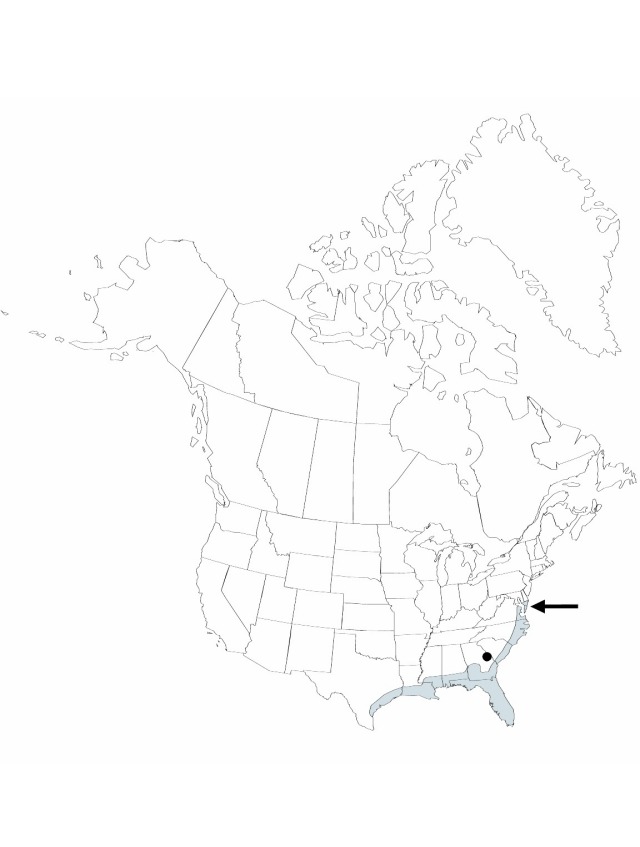Juncus megacephalus
Boston J. Nat. Hist. 1: 132. 1835.
Herbs, perennial, rhizomatous, 3–11 dm. Rhizomes 3–4 diam. Culms erect, terete, 3–4 mm diam., smooth. Cataphylls 1–2, purple, apex acute. Leaves: basal 0–1, cauline 2–3; auricles 0.5–2 mm, apex acute, membranaceous; blade terete, 0–24 cm × 0.5–1.7 mm, most distal cauline leaf blade 0–2 cm, shorter than sheath. Inflorescences panicles of (1–)3–21 heads, 1–8 cm, branches erect to spreading; primary bract erect; heads 40–60-flowered, spheric, 8–12 mm diam. Flowers: tepals straw-colored to reddish brown, lanceolate-subulate; outer tepals 2.9–4.1 mm, apex acuminate; inner tepals 2.2–3.7 mm, apex acuminate; stamens 3, anthers 1/4–1/2 filament length. Capsules exserted, , straw-colorerd, 1-locular, subulate, 2.5–4.2 mm, apex tapering to subulate beak, valves not separat ing at dehiscence, fertile throughout or only proximal to middle. Seeds ellipsoid to ovoid, 0.4 mm, not tailed; body clear yellow-brown.
Phenology: Fruiting summer.
Habitat: Fresh marshes, moist hollows of sand dunes, swales, roadside ditches, and dry fertile soil
Elevation: 0–100 m
Distribution

Ala., Fla., Ga., La., Md., Miss., N.C., S.C., Tex., Va.
Discussion
Selected References
None.